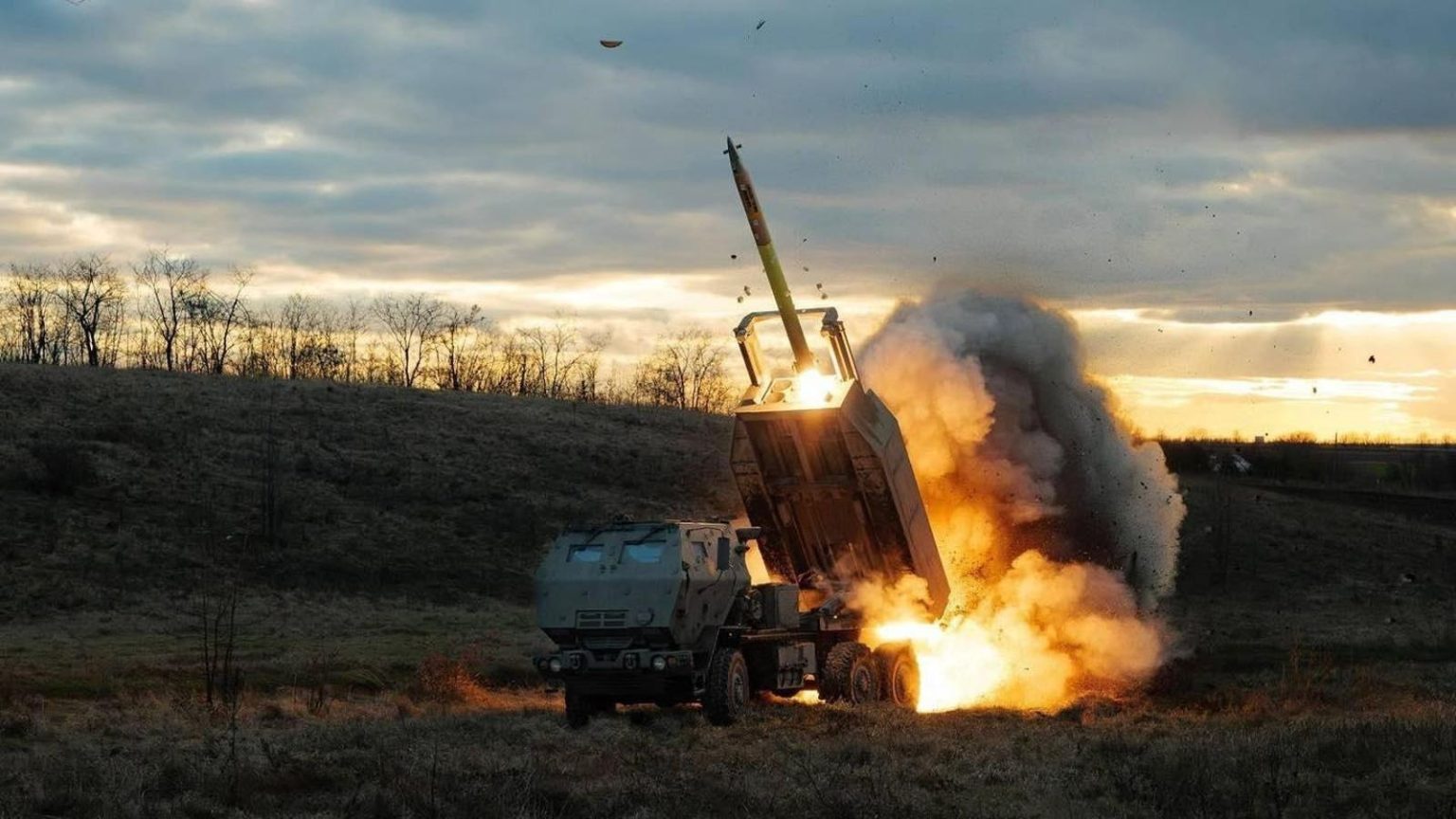Russian Pres. Vladimir Putin has given his troops until Oct. 1 to defeat the Ukrainian invasion of Kursk Oblast. And so, on Wednesday, Russian regiments counterattacked the 400-square-mile salient from no fewer than three directions.
The counterattacks—at least two on the salient’s left flank, another on its right—“surprised many” Ukrainians, according to the Ukrainian analysis group Frontelligence Insight. But it didn’t surprise the Ukrainian army’s 27th Rocket Artillery Brigade, the sole operator of the army’s roughly three dozen American-made High-Mobility Artillery Rocket Systems wheeled launchers.
As a drone from the Ukrainian 14th Unmanned Aerial System Regiment observed from overhead, one Russian platoon with a few dozen troops rolled up to the Seym River—which bounds the Kursk salient in the northwest—dismounted from its trucks and dashed across a temporary pontoon bridge Russian engineers had assembled across the river.
The 27th Rocket Artillery Brigade’s HIMARS opened fire with GPS-guided M30/31 rockets, each ranging as far as 57 miles and packing more than 400 grenade-sized submunitions.
The results were horrific. Two rockets hit the exposed troops at the far end of the floating bridge. When the survivors sought shelter in a nearby treeline, a third rocket burst directly overhead. It’s unclear how many Russians were killed or wounded, but the drone feed depicts around 30 moving figures at the start of the bombardment—and fewer than a dozen at the end.
The Ukrainian rocketeers may have defeated that one Russian assault. But according to the Ukrainian Center for Defense Strategies, other Russian units managed to recapture a cluster of villages around Snagosk on the left of the salient, as well as the village of Ulanok on the right. Ukrainian forces led by the 22nd Mechanized Brigade counterattacked west of Snagosk, aiming to cut off the advancing Russians.
The front line is chaotic. And so is the force structure on both sides of the developing battle. The Ukrainian force is a mix of battalions from the army, the separate air assault forces and the territorials. On the Russians side, the mix is even messier—a “salad of units,” according to Frontelligence Insight. “They consist mostly of battalions or regiments pulled from various divisions and brigades, then pieced together into the same geographic area,” the analysis group explained.
That organizational improvisation could become a problem for the Russians. “A force structured this way generally lacks significant offensive potential until a cohesive command structure and coordination are established,” Frontelligence Insight noted. “Given that this has been a long-standing issue within the Russian military, our team does not anticipate major improvements in the short period.”
“However, this does not mean Russia lacks offensive capability,” the group warned.
The Russians still have an overall advantage in troops and vehicles despite staggering losses in their 30-month wider war on Ukraine. In the parts of Kursk that are under Ukrainian control, the Ukrainians have a defensive advantage that mitigates the Russians’ superior numbers.
“Ukrainian forces benefit greatly from their elastic defense approach, which helps avoid static confrontations where Russian artillery, tactical missiles and air power could dominate the battlefield,” Frontelligence Insight noted. Rather than fight to the death for any particular patch of ground, Ukrainian troops usually fight until they’re on the verge of being overwhelmed—and then move to more defensible positions.
“This maneuverable defense approach is advantageous, but it could become problematic,” Frontelligence Insight warned. If enough Russian troops attack from enough different directions at the same time, Ukrainian troops might run out of fallback positions. That “could seriously decrease Ukraine’s chances to defend successfully.”
Ukrainian commanders appreciate this risk. That’s why their drones are carefully monitoring the likely approaches for Russian reinforcements—including any pontoon bridges across the Seym. And why their best rocket artillery is poised to strike the reinforcements before they reach the front line.
Read the full article here





